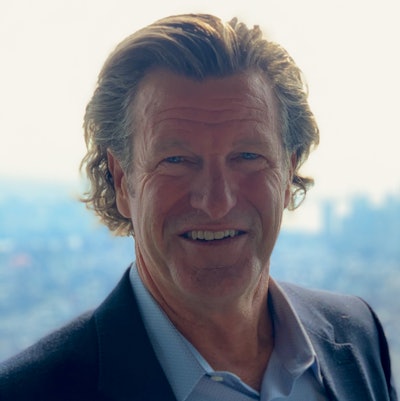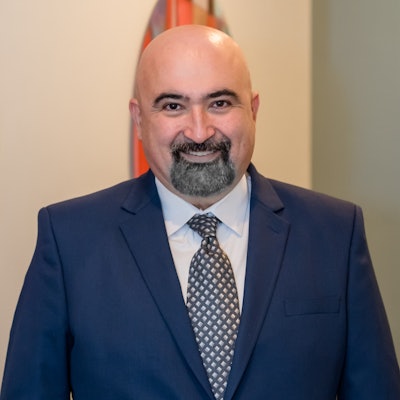In this series hosted by Dr. Michael W. Davis, two prominent leaders in the dental profession answer the same questions. Neither participating dentist has advance knowledge of their counterpart, nor their answers. The answers are designed to generate discussion that ultimately benefits dentistry. Readers are invited to join the discussion by sharing their comments in the forum or sharing their thoughts on social media.
In June 28, 2023, Dentistry in General (DIG), a dentist-only online community posted an online Zoom virtual meeting between the executive directors of every component state dental association and ADA Executive Director Dr. Raymond A. Cohlmia. DIG reported the video was provided by an anonymous source.
Attendees discussed an initiative by the California Dental Association (CDA) that their state component house of delegates would vote on a proposal to allow CDA member dentists to opt in or out of concurrent ADA membership. Tripartite membership could be made optional for California dentists.
Numerous questions arose from meeting participants. Would this collapse the tripartite system nationally, which joins the ADA, state dental associations, and local component dental societies into a common membership? How might smaller states be impacted by a potential exodus of California members from the ADA? Would the ADA go the way of the American Medical Association into what some perceive as a paper tiger?
Most questions were directed at Peter DuBois, executive director of the California Dental Association (CDA). He stated that CDA’s member survey held that approximately one-third of their dentists would remain with the national ADA. DuBois also pointed out that such a figure would still make the CDA a major component of the ADA. He highlighted how his membership feels the ADA largely duplicates the work of the CDA.
The CDA touts a state membership number of 27,000, and 72% of dentists in California belong to the CDA. In fact, 1 in 6 dentists within the ADA are also members of the CDA. The CDA presents a large footprint upon the ADA.
Subsequent to that meeting, on August 15, 2023, the ADA initiated a promotional campaign, Together, We Thrive. The ADA’s effort is focused on the value and power of membership in organized dentistry simultaneously at the three levels of local, state, and national.
Dr. John Blake, president of the CDA
 Dr. John Blake, president of the California Dental Association.
Dr. John Blake, president of the California Dental Association.
While dental association market share nationally has declined for over a decade, the CDA and the state’s local components have maintained member market share within our state. We are proud of the health of our membership and credit that health to relentlessly listening to what our members want from their professional association.
With changes in the professional landscape -- things like generational preferences and mindsets and practice modality shifts -- there are trends that we cannot ignore. Change and innovation are necessary to ensure that dental associations remain viable to support dentists and the profession well into the future.
Dentist leaders in California have begun to discuss a potential evolution to our membership model that is responsive to multiple rounds of member surveys that indicated a supermajority of members in California may not choose to be a member of ADA if they were allowed the choice.
The proposal being discussed is for optional ADA membership in a tripartite structure. We are not proposing to dissolve the tripartite or disaffiliate from it. Rather, we will continue to strongly support the tripartite within this optional structure.
We feel strongly that introducing choice in this way will keep more dentists engaged in organized dentistry, which we believe is good for the profession. The CDA board is advancing this proposal on behalf of members but cannot act independently. The proposal requires approval from our partners in the local components and the ADA. We are moving through the process over the next several months of asking them to support this change.
Dr. Bob “Dee” Dokhanchi, founder of DIG
 Dr. Bob “Dee” Dokhanchi, founder of Dentistry In General.
Dr. Bob “Dee” Dokhanchi, founder of Dentistry In General.
In the complex landscape of organized dentistry, a pivotal question looms large: Should the tripartite membership structure remain obligatory, or should states be given the autonomy to choose? While this issue may appear procedural, its consequences are far-reaching, impacting the strength, unity, and advocacy of dentists across the U.S.
Unity is the linchpin of our argument. If individual states are allowed to decide, some may opt out of belonging to the larger national organization, potentially weakening the profession. Dentistry, like many professions, derives strength from numbers. A united front ensures that the collective voice of dentists resonates more effectively in the corridors of power.
The power of a single voice cannot be underestimated. “United we stand, divided we fall” is not merely a cliche but a poignant truth. Dentists, regardless of their location, must unite to address the numerous challenges facing the profession. An optional tripartite structure fragments this voice, making it challenging to present a unified stance on critical issues, such as healthcare policy, licensure standards, and more.
Smaller states often grapple with limited resources to make their voices heard at the national level. Without the support of a larger, national organization, these practitioners risk being sidelined in critical discussions. Weakening the ADA not only harms these dentists but also undermines the overall strength of organized dentistry.
Transparency and accountability are paramount when considering changes to the tripartite structure. Any proposed alterations should be scrutinized carefully. It is essential to expose any personal or institutional gains that may be driving those advocating for change. Maintaining transparency is vital to preserve organized dentistry’s integrity.
Criticism has been levied at the ADA for a perceived lack of effective communication with dentists. Some within the ADA have, at times, shifted their focus toward corporate dentistry, conveniently referred to as “group practices” to mitigate the negative connotation associated with the acronym dental support organization.
This shift in emphasis has raised eyebrows and left many dentists concerned. Furthermore, the publication of seemingly careless articles advocating surrendering to value-based dentistry, a form of capitation insurance plans, has left practitioners bewildered.
Additionally, the ADA’s silence in the face of rogue state officials, such as some in Massachusetts and Maine, who have tarnished the image of organized dentistry and disrupted the lives of dedicated practitioners, is disconcerting. Questionable behavior (attempting to undermine) Massachusetts’ Question 2, where dental loss ratio legislation passed, has further fueled skepticism. These issues provide ammunition to those who seek the elimination of the tripartite structure.
A significant part of the problem lies in the ADA’s disjointed communication strategy. The communication wing and the publication team within the ADA operate as separate entities, and there seems to be a lack of substantive oversight on what gets published.
The absence of a clear agenda raises questions about transparency and accountability. It is evident that improvements are needed within the ADA, as no organization is perfect. However, the solution lies in reform, not dismantling, to ensure the continued strength and effectiveness of organized dentistry.
But the ADA has also undertaken commendable initiatives and is showing signs of improvement. It is essential to recognize that we shouldn’t discard the baby with the bathwater. We must acknowledge that, despite the shortcomings, the ADA remains a vital entity for organized dentistry in the U.S. With over 160 years of building this organization, it cannot be allowed to crumble due to the actions of a few with suspected personal agendas.
Merely staying on the sidelines and complaining will not resolve the issues at hand. In fact, not joining the ADA would be an even worse decision. It would provide free rein to those within the ADA who are comfortable with the status quo, potentially exacerbating the problems we seek to address.
In conclusion, the solution does not lie in discarding the tripartite structure but in fortifying it. A united front, where all states actively participate, ensures a more robust voice in Washington and upholds the integrity of organized dentistry. As the saying goes, “Together we stand, divided we become the AMA.” This adage underscores the paramount importance of maintaining the mandatory tripartite membership structure for organized dentistry in the United States.”
Dr. John Blake is president of the California Dental Association and executive director and dental director of the Children’s Dental Health Clinic in Long Beach, California.
Dr. Bob “Dee” Dokhanchi earned his Doctor of Dental Surgery degree with clinical honors from Loyola University’s Chicago College of Dental Surgery in 1992 and has been running a successful private dental practice since 1993. Dokhanchi is a founder in the Facebook group Dentistry in General.
The comments and observations expressed herein do not necessarily reflect the opinions of DrBicuspid.com, nor should they be construed as an endorsement or admonishment of any particular idea, vendor, or organization.



















